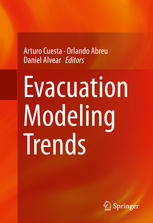

Most ebook files are in PDF format, so you can easily read them using various software such as Foxit Reader or directly on the Google Chrome browser.
Some ebook files are released by publishers in other formats such as .awz, .mobi, .epub, .fb2, etc. You may need to install specific software to read these formats on mobile/PC, such as Calibre.
Please read the tutorial at this link: https://ebookbell.com/faq
We offer FREE conversion to the popular formats you request; however, this may take some time. Therefore, right after payment, please email us, and we will try to provide the service as quickly as possible.
For some exceptional file formats or broken links (if any), please refrain from opening any disputes. Instead, email us first, and we will try to assist within a maximum of 6 hours.
EbookBell Team

5.0
60 reviewsThis book presents an overview of modeling definitions and concepts, theory on human behavior and human performance data, available tools and simulation approaches, model development, and application and validation methods. It considers the data and research efforts needed to develop and incorporate functions for the different parameters into comprehensive escape and evacuation simulations, with a number of examples illustrating different aspects and approaches. After an overview of basic modeling approaches, the book discusses benefits and challenges of current techniques. The representation of evacuees is a central issue, including human behavior and the proper implementation of representational tools. Key topics include the nature and importance of the different parameters involved in ASET and RSET and the interactions between them. A review of the current literature on verification and validation methods is provided, with a set of recommended verification tests and examples of validation tests. The book concludes with future challenges: new scenarios and factors for future model developments, addresses the problem of using deterministic and/or stochastic approaches and proposes, and discusses the use of evacuation models for supporting timely decisions in real-time. Written by international experts, Evacuation Modeling Trends is designed for those involved in safety, from emergency and intervention personnel to students, engineers and researchers.